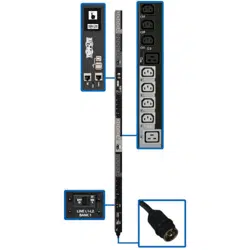Loading ...
Loading ...
Loading ...

8
3. The Web Interface
3.2.2 Status/Details
The Details page (Figure 3-4) displays the full list of device status information for the selected device, including the information displayed in the
Overview page. To navigate between the device and any connected EnviroSense2 sensor modules, select the desired device from the device
dropdown menu.
Figure 3-4: Details Page
3.2.3 Status/Alarms
The Alarms page (Figure 3-5) will display the alarms for the selected device. Along with the time stamp and alarm details, alarms indicate their
current state (active or inactive) and the acknowledge status (yes or no). An alarm that is inactive, meaning the alarm condition has cleared, and
acknowledged will be removed from the list. An alarm can be acknowledged in one of two ways: the system can be set to auto-acknowledge
alarms as they are received, or the user can disable auto-acknowledge and manually acknowledge alarms by selecting the checkbox (or
checkboxes) of the alarms to be acknowledged and clicking the Acknowledge button. By default, Auto-acknowledge is enabled (as shown in Figure
3-5) and, as a result, the Acknowledge button is not displayed. Turn off the Auto-acknowledge switch to see the Acknowledge button ( ).
Note: This setting should be enabled if using with Tripp Lite management software or PowerAlert Network Shutdown Agent (PANSA).
Figure 3-5: Alarms Page
3.3 Control
The Control menu group contains four submenus: Device, Loads, Load Groups and Events. The available controls will vary by device.
Figure 3-6: Control Menu Group
Loading ...
Loading ...
Loading ...
